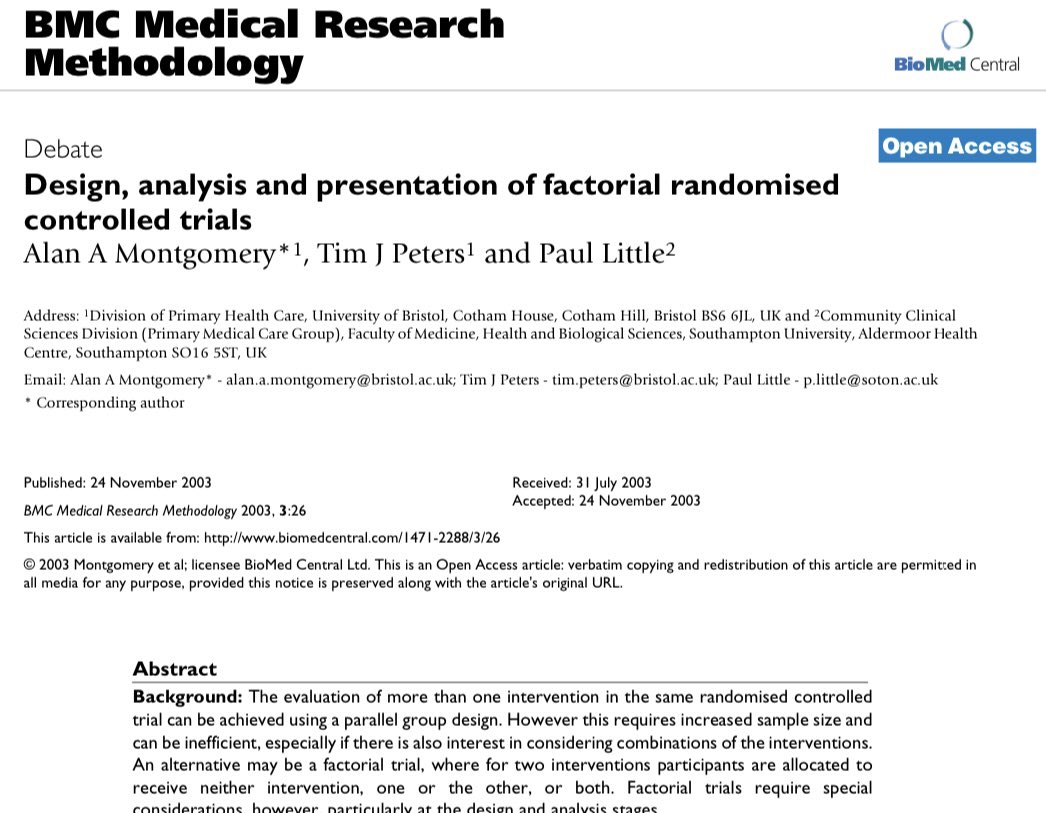
There was an interesting paper this week on different stakeholders understanding of the concept of #equipoise. Equipoise is an essential concept in clinical trials but is often not well understood 1/8
#MethodologyMonday
#MethodologyMonday
For it to be ethical to randomise in a trial, it is important that there is uncertainty which treatment is best 2/8
Originally uncertainty (equipoise) had to be at the level of the individual clinician but was refined to uncertainty at the professional community level by Freedman in the 1980s 3/8
nejm.org/doi/full/10.10…
nejm.org/doi/full/10.10…
Equipoise has often, however, been noted to be hard to define/operationalise and this week’s paper by Dewar et al found 7 different conceptualisations of equipoise among a set of trial stakeholders 4/8
trialsjournal.biomedcentral.com/articles/10.11…
trialsjournal.biomedcentral.com/articles/10.11…

There have been many previous papers highlighting the difficulties clinicians can have with equipoise. Lottie Davies et al also showed how the issue can be particularly amplified in some trial designs eg trials of surgical vs non-surgical treatments 5/8
trialsjournal.biomedcentral.com/articles/10.11…

trialsjournal.biomedcentral.com/articles/10.11…


There was also an interesting debate paper in the BMJ a number of years ago that put forward arguments for and against the continuing relevance of equipoise 6/8
bmj.com/content/359/bm….
bmj.com/content/359/bm….

However, despite the variation, the Dewar et al paper found that the concept of equipoise/uncertainty is still seen to be a fundamental principle underpinning trial design. 7/8
This suggests to me that transparency is key - we should be open in our trial reports what constituted the underlying uncertainty that underpinned the concept of equipoise in our particular trial 8/8
• • •
Missing some Tweet in this thread? You can try to
force a refresh
 Read on Twitter
Read on Twitter










